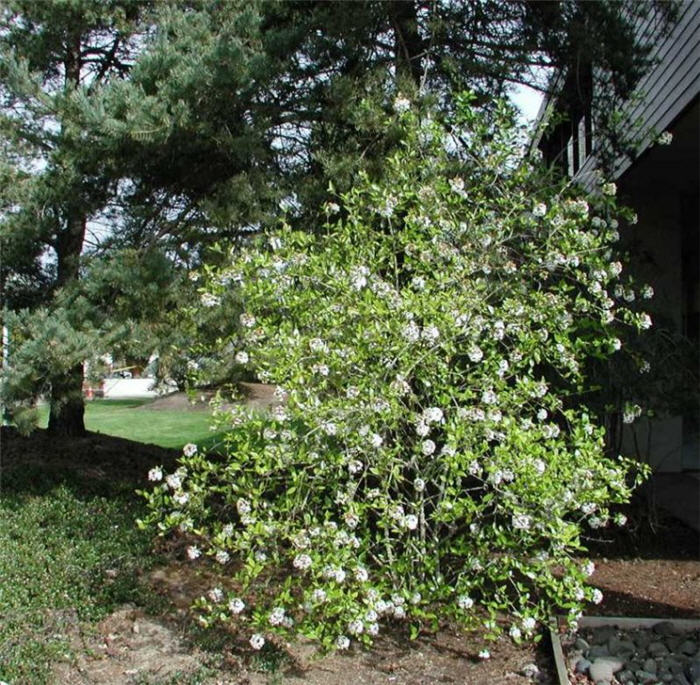| Botanical Name: Viburnum x burkwoodii | |
| Common Name: Burkwood Viburnum |

-
Anatomy
-
Culture
-
Design
Plant Type
Shrub
Height Range
6-12'
Flower Color
White
Flower Season
Spring
Leaf Color
Dark Green
Bark Color
Grey
Fruit Color
Red
Fruit Season
Fall
Sun
Full, Half
Water
Medium
Growth Rate
Moderate
Soil Type
Sandy, Clay, Loam, Rocky, Unparticular
Soil Condition
Average, Rich, Well-drained
Soil pH
Neutral
Adverse Factors
n/a
Design Styles
English Cottage, Formal, Mediterranean, Ranch, Spanish, Woodland
Accenting Features
Fall Color, Fragrance, Showy Flowers
Seasonal Interest
Spring, Summer, Fall
Location Uses
Background, Shrub Border, Foundation, Walls / Fences
Special Uses
Cut Flowers, Hedge, Screen, Small Spaces
Attracts Wildlife
Birds, Butterflies
Information by: Stephanie Duer
Photographer: Linda Engstrom, Connon
Photographer: Linda Engstrom, Connon
-
Description
-
Notes
This deciduous viburnum is prized for its clove-scented spring flowers. The shrub forms an generally upright, densely branched, rouded habit, growing 6 to 12 feet tall but only about half as side. Leaves are a glossy dark green, and turn burgundy in the fall. Pink flower buds appear in April and open to fragrant, pinkish-white flowers, which in turn are followed by berries that ripen to red in August. Use in a shrub or foundation border, along a fence, or as a screen or hedge. Birds enjoy the berries.
Grow in well-drained soil in full sun to part shade. Prefers loamy soils, but tolerates wide range of soils. Tolerates clay soils better than most viburnums. Established plants prefer regular watering but have some drought tolerance. Prune as needed immediately after flowering, but avoid shearing as it makes the shrub sort of twiggy and woody (see Guides).